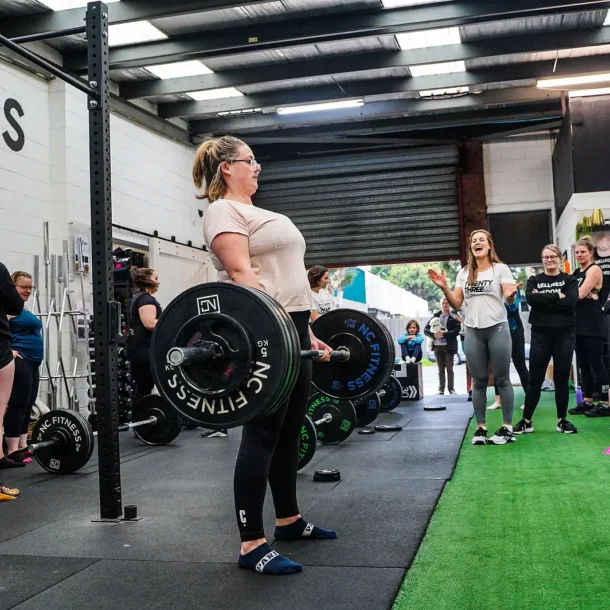

You are having a baby! This is a such an exciting and special time. As an active women, it can also be a really confusing time as there a lot of myths out there about what to do and not to do during your pregnancy. The aim of this post is to give you sound advice which is a balance between enjoying the benefits of regular exercise during your pregnancy while also looking at the bigger picture of health and wellbeing for you and your baby, 9 months and beyond. Your body will obviously change during your pregnancy and so must your training.
If I am to give you one piece of advice that is to listen to your body and always be in consultation with your GP and medical team about choosing a regime that is suites your individual needs. The advice given in this post is general advice only, ensure you consult your doctor before deciding if this advice suites your needs.
What can you expect from pre-natal exercise?
Regular exercise during pregnancy is important. An appropriate exercise plan during your pregnancy has the following health benefits:
Why you need to modify your program?
As you continue to support the creation of your little one, you will have a significant change in hormones levels as well as physiological and psychological changes too.
In your first trimester, you might not need to make many changes at all.
There are four cornerstones that underpin safe, appropriate and effective fitness training during pregnancy that should guide everything that you do.
1. Your pelvic floor fitness and health
2. Your abdominal and core strengthening
3. Your posture and back health
4. Safe exercise intensity
To elaborate, your pelvic floor is a muscular floor that supports your bladder, bowel, baby and back stability also. It will already be taking quite a load as it supports your growing baby, so be mindful of any activities that might compromise it. This includes:
Understanding pregnancy hormones while pregnant?
Your hormones, oestrogen, progesterone and relaxin may make you feel uncomfortable (nausea, tiredness, bleeding gums, tender breast, etc) But they all play an important role in supporting the development of your baby.
Relaxin accommodates you growing bump and sets you up for labour. But it can also make you more vulnerable to soft tissue injury, such as strains and sprains. Therefore, choose non-contact, low impact exercise to protect your joins, ligaments and tendons. Be aware of extreme loads, high impact motions and over stretching. Aim to develop greater postural awareness, core stability and movement control. Keep in mind that higher amounts of relaxin might not be a problem until the later stages in pregnancy.
When you are pregnant, your heart and lungs need to work harder. You heart is pumping about one extra litre of blood per minute to support your baby. Therefore you may need to decrease you exercise intensity and find time in your day to relax. Make sure you have at least 30 minutes in your day where you put your feet up. There is an old school of thought that your should not get your heart rate over a certain level for the safety of your baby. This is actually incorrect. However, I would urge all pregnant women to be mindful to stay hydrated and be mindful of training when it is hot. Being dehydrated will make it harder for the body to regulate core temperature and move oxygen around the body.
How does pregnancy effect cardiovascular exercise?
Firstly, I love running, but it is an option I would carefully consider during pregnancy, even in the early stages. Having said this, if you love running and feel good doing so, you can continue. I would be mindful of continuing running into the second and third trimester due to the pressure and impact this can have on your pelvic floor and joints. Some other great options include:
Treadmill: walking rather than running is preferred for your joints and pelvic floor. Add incline rather than speed. Stop if you have pelvic pain
Cycling: recumbent bike or stationary bike is a great low impact cardiovascular option. Be mindful not to turn resistance up too high as pushing too hard through one foot could inflame pelvis
Swimming: as well as being low impact, swimming provides a great respite from the heaviness of pregnancy. Freestyle and breast stroke are perfectly okay to continue providing you were a competent swimmer before failing pregnant. Be mindful of intensity and pool temperature. The hydrostatic pressure will also help alleviate inflammation caused during pregnancy. You can also use a kickboard or do upright exercises. Water running is a good option too. Avoid breast stroke kick if you experience pelvic soreness.
Am I safe to perform resistance training?
In short, yes! If you are used to resistance training, you should to continue this throughout your pregnancy for all the reasons listed earlier. If you are unfamiliar to resistance training, you may need to tread more carefully and enlist the support of a qualified trainer who can manage your training load, intensity and form.
Some general guidelines include:
Why do you need a strong pelvic floor?
A strong pelvic floor is important as it can combat the weakening effect of pregnancy and labour, assist in the prevention of prolapse and incontinence, stabilise the spine and prevent chronic back pain, improves sexual function and sensation and improves awareness needed to relax the muscle during childbirth.
Pelvic floor exercises involve lifting the muscle rather than bearing down, squeezing glutes and holding breath. Ensure you keep all other muscles relaxed and use different cues to ensure you are using the correct technique. In general aim to do you pelvic floor exercises 3- 4 times per day, technique is more important than quantity, continue to breath when lifting your pelvic floor, cross train your pelvic floor by using a variety of protocols, always recruit your pelvic before lifting, put your feet up for 30 mins per day and lastly, it is just as important that you learn to relax your pelvic floor.
Continuing to weight train is a great way to promote a strong pelvic floor, possibly removing the need to do specific Kegels alone.
Here are some of my favourite cues for the pelvis floor:
You should be aiming to cross train your pelvic floor:
Practise pelvic floor training from any position, anytime (sitting, laying, standing, kneeling, etc. Train your pelvic floor using a combination of the methods below
In Summary:
While you may not be showing, it is important that in the early stages you understand that there are LOTS of changes going on. Take the time to rethink you current exercise regime. If possible always tell you fitness coach, even if your news is not public knowledge. They will be in a much better place to support you to make the changes needed to your workouts. If you are suffering from morning sickness or fatigue, take the time to rest but also know that light exercise can help you feel more energised too. Avoid overheating and there may be times when rest is best. You also should get started on pelvic floor exercises, posture and core stability straight away and know that you are starting a 9 month training program for the best prize of all.
Do you want more guidance on exercises to do at home or in the gym during pregnancy? Come into the studio to chat.

Ange Drake is an personal trainer, women’s empowerment coach and fitness blogger in the northern suburbs of Melbourne. She is the director of one of the few womens’ only strength training gyms in Melbourne, 23W. Ange helps women to learn how to use strength based training, nutritional strategies and a positive mindset to transform their bodies, relationship with food and mind.
Can’t decide which of our packages is best suited for you? Take our questionnaire to help you decide!





